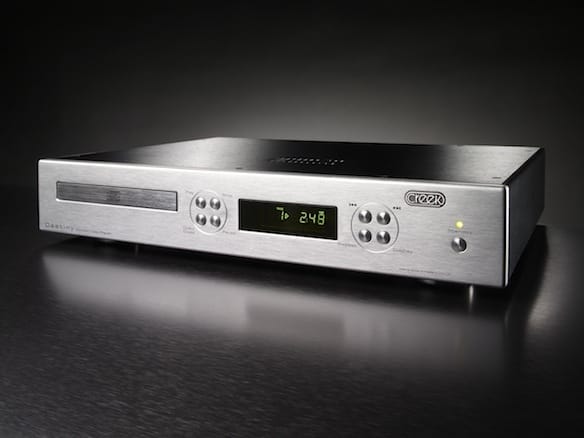
Image credit: Acoustic Images.
Though the Compact Disc was first conceived in 1969, as an alternative to cassette tapes and vinyl albums, it would not be until 1976 that Sony would demonstrate a CD player. Developed first as a means to play and archive audio recordings, CD technology has advanced to include recordable discs as well as video recording and playback capabilities.
Range of Products
Today, CD players are much more diverse, ranging from single play high-performance machines, to multi-disc CD platter players, and Jukebox CD players, literally capable of playing from hundreds of CDs. The formats listed under specifications on a model may include CD, CD-R, CD-RW, SACD, as well as MP3 and WMA compact discs.
These variations on the original compact disc, a read-only disc for playback, have expanded into recordable formats (CD-R), rewriteable formats (CD-RW), high-definition (SACD) and storage of compressed files from formats with larger size requirements (MP3 and WMA). For our purposes in the audiophile buyer’s guide, we will focus on audio CDs, and priceonomics will help find the CD player for you!
Encoding and Sampling Rates
In 1980, Sony and Phillips collaborated on a document defining the specifications for CD audio recording and playback, known commonly as the “Red Book.” The red book listed 16-bit PCM encoding and 44.1 kHz sampling rates as the industry standard. The bit-depth, or resolution directly affects the signal to noise ratio. The sampling rate was selected, among other reasons, primarily as an optimum position in the standard range of human hearing, from 2Hz to 20kHz and rendered Phillips’ early development of a 14-bit encoding format obsolete.
It is common to see CDs advertised as 20-bit or even 24-bit, but these higher encoding rates are occurring in the initial analog to digital conversion process, not in the playback. It is generally agreed that some CDs sound better than others, but it is not agreed that this is a result of these sampling rates. Quality of the master recording, talent of the recordist, and equipment used in the recording and sampling process are factors that affect the sound of the finished product, but get little attention. Though file formats like FLAC and WMA provide for 20-bit encoding and 96kHz sampling, or 24-bit 192kHz encoding and sample rates, these exceed most CD player capabilities, with exceptions, as well as the range of human hearing.
The Market for CD Players
CD players are available at all points in the price spectrum, with the most popular coming in between $100 and $1000. What are you paying for in a field where one unit can easily cost ten times as much as another?
Toshiba and Sony both produce a CD player for under $150 for home entertainment. What does one get for that investment? Crisp, clean video images, sharp sound, a 192khz, 24-bit digital/analog converter, and the capacity to play many disc formats, excepting blu-ray. Also there is no HDMI output.
To look at Yamaha players in the $300-$700 range, one notices a silent transport, with discrete circuitry for analog, digital and transport functions, minimizing potential for crosstalk between the magnetic fields, which can cause noise. One also notices separate DACs for each of the right and left channels, optimizing true stereo separation. Another development is Pure Direct mode, which turns off displays and digital outputs, potentially eliminating sources of noise. Again, the player can handle every format of disc, and provides a front-panel USB input, to play music from a flash drive or external hard-drive, qualifying as an outboard DAC converter.
This is a quickly changing industry, and despite the fact that CD sales peaked in 2000, and have tapered off since, there is always a new algorithm being applied to a new development in sound enhancement. An expert ear may capably differentiate signal to noise ratios, or discrete DACs, but for the bulk of potential listeners, most will be happy with a middle-of –the-road level purchase, and go from there. The internet is filled with customer reviews expressing satisfaction with entry-level CD players, and there are reviews from those who seem eternally unable to be acoustically satisfied, particularly with a digital music source.



